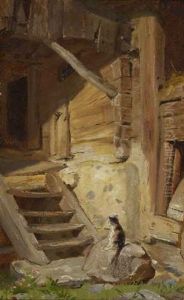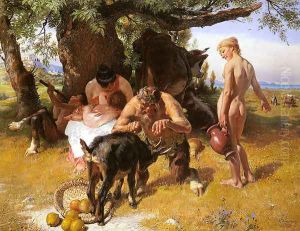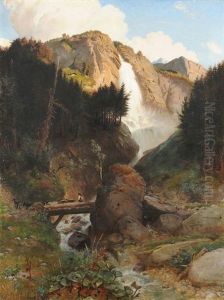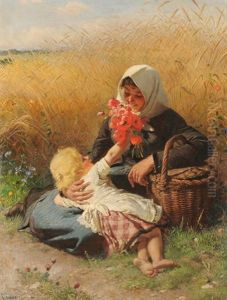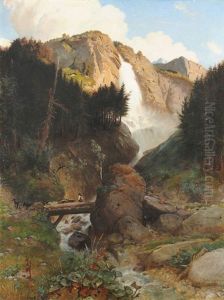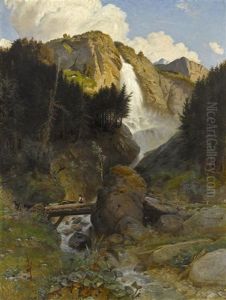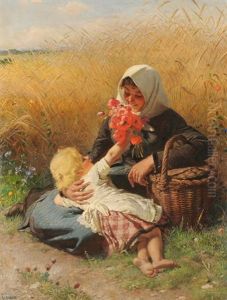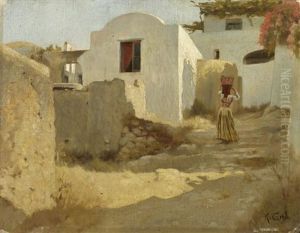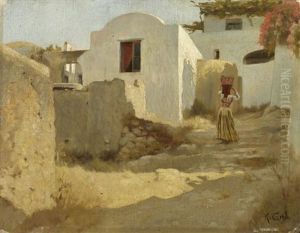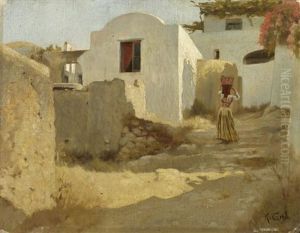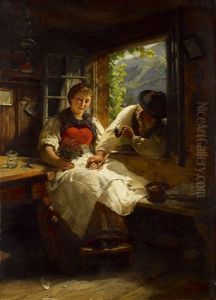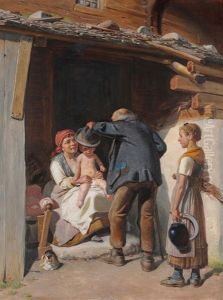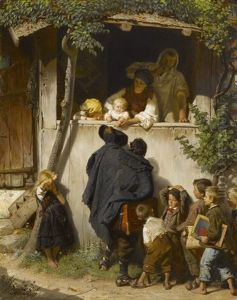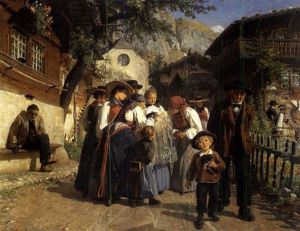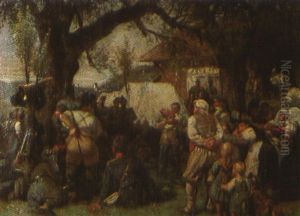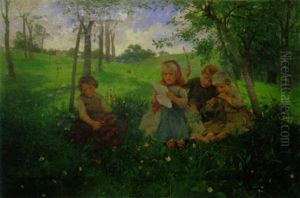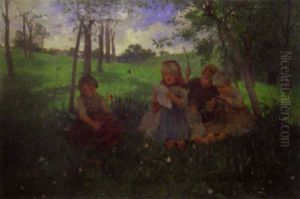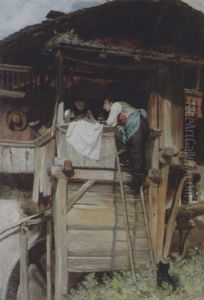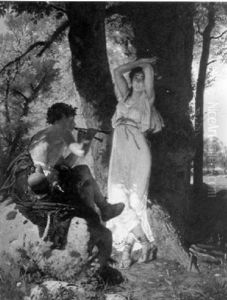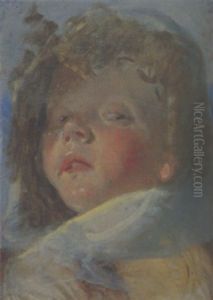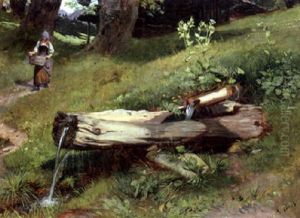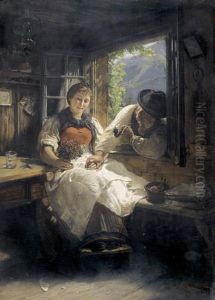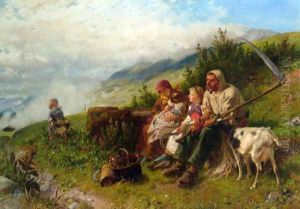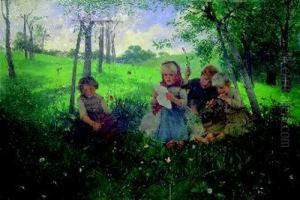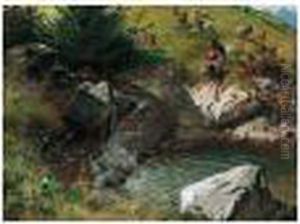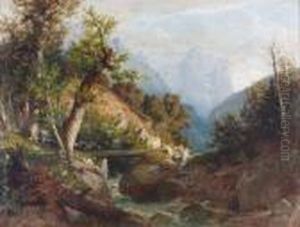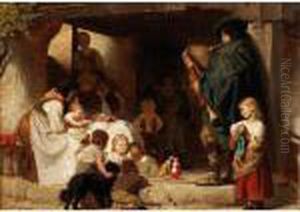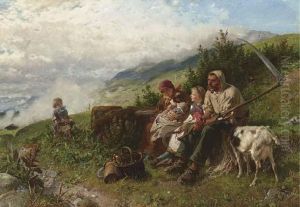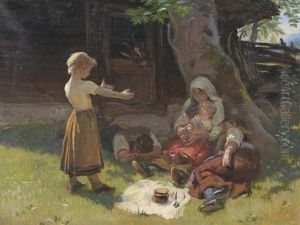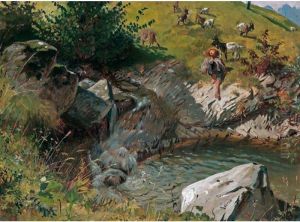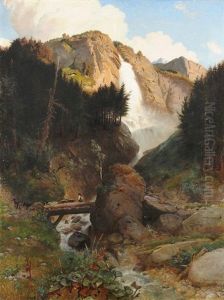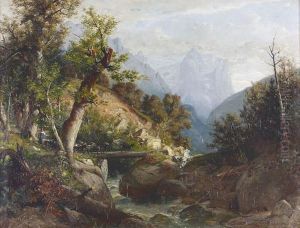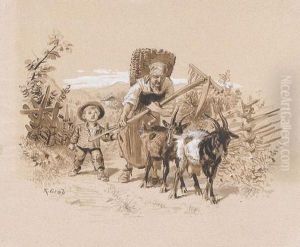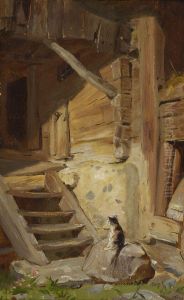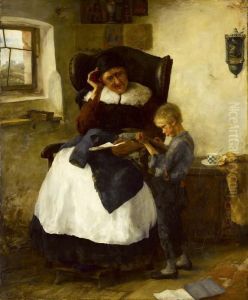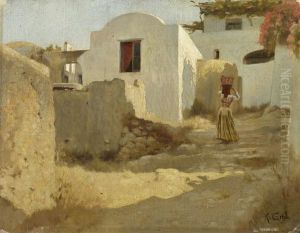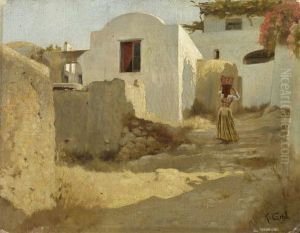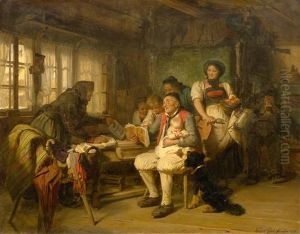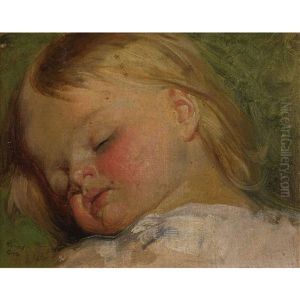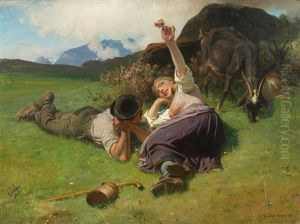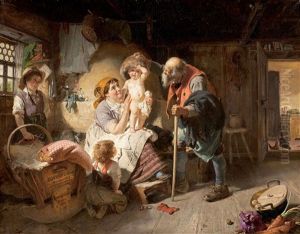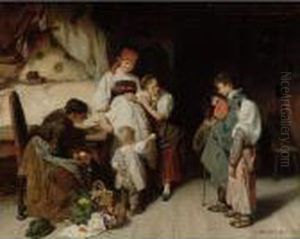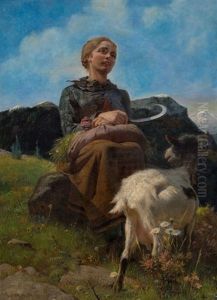Conrad Grob Paintings
Conrad Grob was a Swiss artist, born in 1828 in Zürich, Switzerland. Known for his detailed and realistic portrayals of Swiss rural life, Grob's work captures the essence of 19th-century peasant life, highlighting both its beauty and hardships. His artistic journey began in his early years, influenced by the picturesque landscapes and vibrant culture of his homeland. Grob's dedication to art was evident from a young age, and he pursued his passion with fervor, honing his skills and developing a distinctive style that would later define his career.
Grob's paintings are characterized by their meticulous attention to detail, vibrant colors, and the ability to convey deep emotional narratives through the depiction of everyday scenes. His works often featured scenes of rural life, including farmers at work, village gatherings, and serene landscapes, all portrayed with a realism that was both innovative and captivating for his time. Grob's commitment to realism was not just about aesthetic appeal; it was also a means to document and celebrate the Swiss way of life, making his art a valuable cultural artifact.
Throughout his career, Conrad Grob exhibited his works in various prestigious galleries, gaining recognition and accolades for his contributions to Swiss art. His paintings not only delighted the Swiss public but also attracted an international audience, showcasing Swiss culture on a global stage. Despite his success, Grob remained deeply connected to his roots, often returning to the Swiss countryside for inspiration.
Grob's influence extended beyond his lifetime, with his works continuing to be celebrated for their historical and artistic value. His paintings are considered important documents of 19th-century Swiss rural life, offering insights into the social and cultural dynamics of the period. Grob's legacy is preserved in museums and collections across Switzerland and beyond, where his art continues to inspire and captivate audiences.
Conrad Grob passed away in 1904, leaving behind a rich body of work that continues to be studied and admired. His dedication to capturing the essence of Swiss rural life has made him a significant figure in the history of Swiss art, celebrated for his ability to blend realism with emotional depth, creating a window into the world of 19th-century Switzerland.
